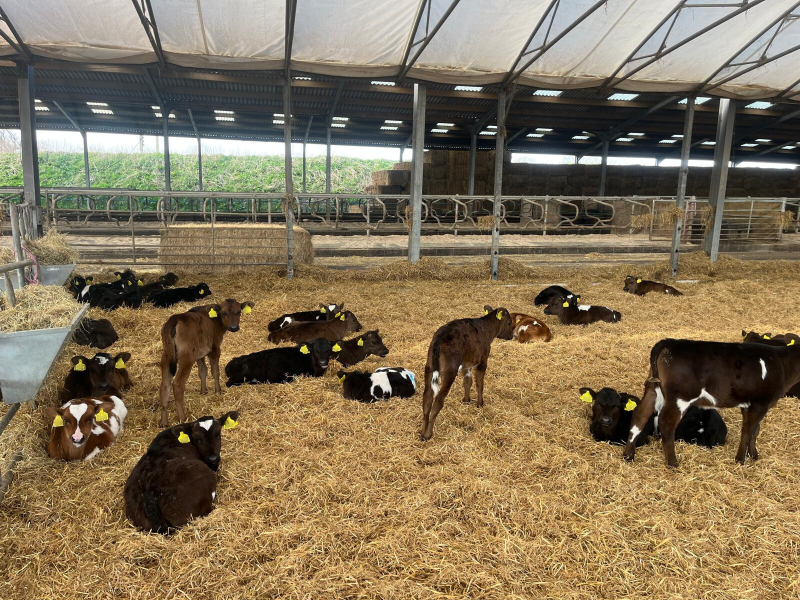Article
Amino Acids in Calf Milk Replacer
Calf milk replacer (CMR) plays a vital role in early calf nutrition. It supplies essential amino acids (AAs’) needed to build proteins in young calves. Calves need more than twenty specific amino acids for healthy growth and development.
During digestion, proteins are broken down into individual AA’s. Calves absorb and resynthesise these to support their maintenance and growth.
Calves start their lives as monogastrics, receiving AA’s from milk or milk replacer. During the milk feeding phase, calves are in transition so are neither a monogastric or fully functioning ruminant. This phase makes it difficult to predict their exact AA requirements. Currently no accurate models exist to predict AA supply in pre-weaned calves.

Trying to calculate the protein content in a calf’s diet is complex and often of little value. Instead we must record crude protein or what should be called ‘could be’ protein. This is because it is purely a measure of the nitrogen content of the diet multiplied by a coefficient to convert it into crude protein.
This method is flawed. It overestimates the protein content of the cheaper milk replacers and underestimates the protein value of skim milk and whey based diets. (See Table 1).

Crude protein tells us nothing about how usable the amino acids are for the calf. Even if we could determine the exact protein amount, we still wouldn’t know how well calves could digest and use it.
Choosing the right raw materials for Calf Milk Replacer
To choose the best CMR, focus on the source, storage, and processing of ingredients. Consistency and quality matter most.
Dairy proteins like skim and whey are rich in amino acids. However, don’t assume all CMR products offer the same benefits. Protein digestibility, heat treatment of the raw materials and individual protein AA profile all influence the performance of the CMR.
Milk powders change with heat treatment. Skim milk powder dried for food tends to be high heat treated, causing damage to the milk proteins, therefore lowering the AA’s content. Sourcing CMR from companies that dry their own milk ingredients from raw fresh milk (farm to farm) at lower drying temperatures is more important than the percentage of skim milk powder.

If we consider ash content, in plant-based feeds, the ash level is low so the impression is that the lower the better. However, a reason children should consume cow’s milk and not plant based alternatives is because dairy milk is full of the calcium and phosphorus, needed for bone development.
Calcium and phosphorus are ash so again the more milk the higher the ash content. For calf milk, 7.5% is the sweet spot but not if it comes from adding additional calcium or limestone to the feed.
Top tips on choosing a good quality milk replacer
• Look for quality milk-based proteins – an indication of poorer highly processed milk proteins used is the addition of calcium or limestone on the ingredients list.
• Ask your manufacturer what heat treatment your skim milk replacer was subjected to prior to drying. Low heat treatment skim coagulates like cows milk.
• Milk replacers vary greatly in their levels of protein, ash and non-protein nitrogen. Avoid high levels of non-protein nitrogen (found in poorer highly processed milk proteins), which calves under three weeks can’t utilise efficiently.
• Pick a tried and trusted brand that focuses on amino acid balance, digestibility and performance, not just price. Shine Original is the UK’s number one selling calf milk replacer with low heat skim and buttermilk.
We are stuck with the label format for now and the error strewn crude protein system. There are now effective ways to declare amino acid content but no convention on how to declare it. Good advisers therefore look at the calves not the label. Even better, they start with the end point – the cows. They scrutinise everything, including their longevity and the calving index of heifers. As well as how many heifers reared to eight weeks are entering the milking herd, if all heifers are ovulating at 13-14 months and if the heifers are at target weights.

Leave a Reply